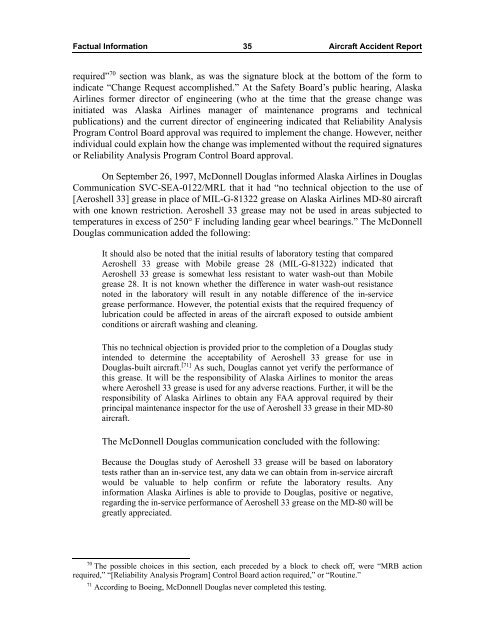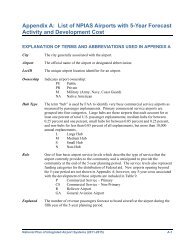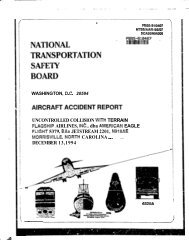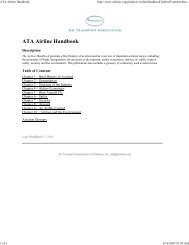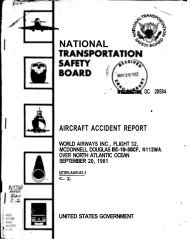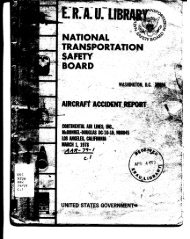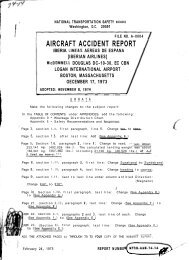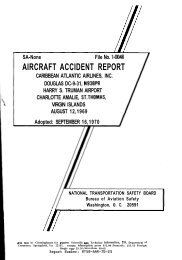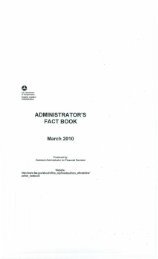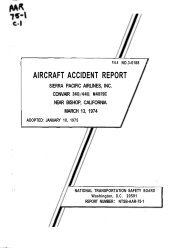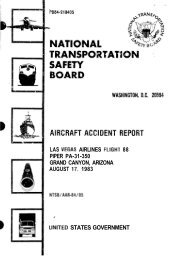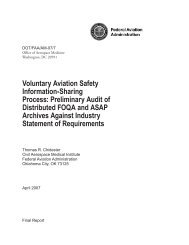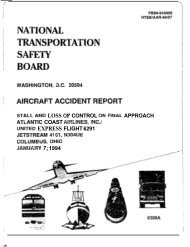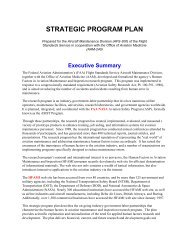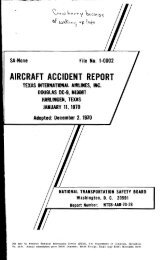NTSB/AAR-02/01
NTSB/AAR-02/01
NTSB/AAR-02/01
You also want an ePaper? Increase the reach of your titles
YUMPU automatically turns print PDFs into web optimized ePapers that Google loves.
Factual Information 35 Aircraft Accident Report<br />
required” 70 section was blank, as was the signature block at the bottom of the form to<br />
indicate “Change Request accomplished.” At the Safety Board’s public hearing, Alaska<br />
Airlines former director of engineering (who at the time that the grease change was<br />
initiated was Alaska Airlines manager of maintenance programs and technical<br />
publications) and the current director of engineering indicated that Reliability Analysis<br />
Program Control Board approval was required to implement the change. However, neither<br />
individual could explain how the change was implemented without the required signatures<br />
or Reliability Analysis Program Control Board approval.<br />
On September 26, 1997, McDonnell Douglas informed Alaska Airlines in Douglas<br />
Communication SVC-SEA-<strong>01</strong>22/MRL that it had “no technical objection to the use of<br />
[Aeroshell 33] grease in place of MIL-G-81322 grease on Alaska Airlines MD-80 aircraft<br />
with one known restriction. Aeroshell 33 grease may not be used in areas subjected to<br />
temperatures in excess of 250° F including landing gear wheel bearings.” The McDonnell<br />
Douglas communication added the following:<br />
It should also be noted that the initial results of laboratory testing that compared<br />
Aeroshell 33 grease with Mobile grease 28 (MIL-G-81322) indicated that<br />
Aeroshell 33 grease is somewhat less resistant to water wash-out than Mobile<br />
grease 28. It is not known whether the difference in water wash-out resistance<br />
noted in the laboratory will result in any notable difference of the in-service<br />
grease performance. However, the potential exists that the required frequency of<br />
lubrication could be affected in areas of the aircraft exposed to outside ambient<br />
conditions or aircraft washing and cleaning.<br />
This no technical objection is provided prior to the completion of a Douglas study<br />
intended to determine the acceptability of Aeroshell 33 grease for use in<br />
Douglas-built aircraft. [71] As such, Douglas cannot yet verify the performance of<br />
this grease. It will be the responsibility of Alaska Airlines to monitor the areas<br />
where Aeroshell 33 grease is used for any adverse reactions. Further, it will be the<br />
responsibility of Alaska Airlines to obtain any FAA approval required by their<br />
principal maintenance inspector for the use of Aeroshell 33 grease in their MD-80<br />
aircraft.<br />
The McDonnell Douglas communication concluded with the following:<br />
Because the Douglas study of Aeroshell 33 grease will be based on laboratory<br />
tests rather than an in-service test, any data we can obtain from in-service aircraft<br />
would be valuable to help confirm or refute the laboratory results. Any<br />
information Alaska Airlines is able to provide to Douglas, positive or negative,<br />
regarding the in-service performance of Aeroshell 33 grease on the MD-80 will be<br />
greatly appreciated.<br />
70 The possible choices in this section, each preceded by a block to check off, were “MRB action<br />
required,” “[Reliability Analysis Program] Control Board action required,” or “Routine.”<br />
71 According to Boeing, McDonnell Douglas never completed this testing.


